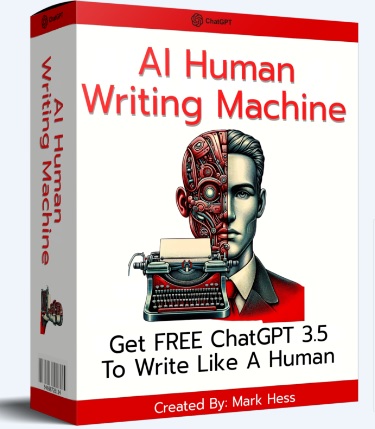
Unleashing Creativity: The AI Human Writing Machine by Mark Hess
Introduction of AI Human Writing Machine:
In the ever-evolving landscape of artificial intelligence (AI) applications, the fusion of human creativity and machine efficiency continues to captivate both scholars and practitioners alike. Mark Hess’s groundbreaking project, the AI Human Writing Machine, represents a significant stride in this direction. Titled “Come Get Some,” this innovative endeavor promises to redefine the boundaries of automated content generation. This review explores the intricacies and implications of Hess’s AI Human Writing Machine, shedding light on its capabilities, limitations, and broader societal impacts.
Unveiling of AI Human Writing Machine:
At its core, the AI Human Writing Machine embodies a symbiotic relationship between human ingenuity and computational power. Leveraging advanced machine learning algorithms, the system analyzes vast datasets to discern patterns, styles, and nuances of human writing. However, what sets this project apart is its integration of human input. Hess, a seasoned writer and technologist, collaborates closely with the AI, infusing it with his creative vision, linguistic finesse, and storytelling prowess.

>> Click instant access and other details<<
Capabilities and Features:
It boasts an impressive array of capabilities, ranging from content generation to narrative synthesis. Equipped with natural language processing (NLP) algorithms, it can compose articles, essays, stories, and even poetry with remarkable fluency and coherence. Moreover, the system adapts to varying genres, tones, and target audiences, demonstrating a versatile aptitude for creative expression.
One notable feature of “Come Get Some” is its interactive interface, allowing users to interact directly with the AI. Through prompts, suggestions, and feedback loops, individuals can fine-tune the output, steering the narrative in desired directions while maintaining the essence of human creativity. This collaborative dynamic between man and machine fosters a sense of co-authorship, empowering users to harness AI as a tool for artistic exploration and expression.
Challenges and Limitations:
Despite its impressive capabilities, it faces certain challenges and limitations inherent to AI-driven content generation. One primary concern revolves around authenticity and originality. While the system excels at mimicking human writing styles, there remains a lingering question of whether AI-generated content can possess genuine creativity and emotional depth devoid of human consciousness.
Furthermore:
Ethical considerations surrounding AI-generated content merit careful deliberation. As AI becomes increasingly proficient at emulating human voices, the delineation between authentic and synthetic narratives blurs, raising concerns about misinformation, plagiarism, and intellectual property rights. Hess and his team acknowledge these challenges, emphasizing the importance of responsible AI usage and transparency in content attribution.
Societal Implications of AI Human Writing Machine:
The advent of it holds profound implications for various industries and societal domains. In the realm of media and publishing, AI-driven content generation offers unparalleled efficiency and scalability, revolutionizing workflows and streamlining production processes. Similarly, in education and academia, it serves as a valuable tool for research, content creation, and knowledge dissemination, augmenting scholarly endeavors and fostering interdisciplinary collaboration.

>> Click instant access and other details<<
Moreover:
The democratization of storytelling facilitated by AI empowers individuals from diverse backgrounds to share their narratives. And perspectives with global audiences. By transcending linguistic barriers and cultural boundaries. It catalyzes cross-cultural dialogue, enriching collective discourse and fostering empathy and understanding across communities.
Conclusion of AI Human Writing Machine:
In conclusion, Mark Hess’s it represents a pioneering convergence of human creativity and artificial intelligence. “Come Get Some” stands as a testament to the transformative potential of collaborative innovation, redefining the contours of creative expression in the digital age. While challenges and ethical considerations persist, the promise of AI-driven content generation to inspire, inform, and connect remains undeniably compelling. As we navigate the complex terrain of human-machine collaboration. Hess’s visionary endeavor serves as a beacon of inspiration. Inviting us to embrace the boundless possibilities of AI as a catalyst for creativity and storytelling.